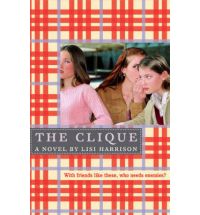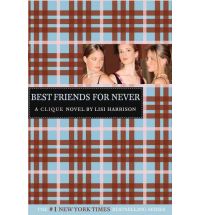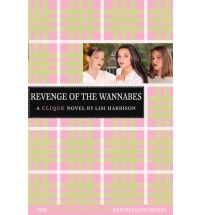Imagine a scenario* in which an author is approached by a nattily dressed (think pinstripes and a cravat), moustachioed gentleman offering a deal that no self-respecting scribe can pass up: an astonishing sum of money (albeit any sum of money is astonishing to most authors) and all the chocolate in the world.'But in return for what? ponders the writer in question, rummaging about her in purse to check that shes still carrying her soul, although perfectly aware that like most writers she'd sell it in an instant for a good block of seventy percent Lindt chocolate.
In reply, the stranger makes a request that is utterly, terribly Faustian in nature:'In return for[dramatic pause augmented by thunder etc] writing a series of tween novels based on a line of Mattel dolls.
Our author, who has a sensible grasp of Keynsian economics, says, somewhat incredulously,'Is that it?, and shruggingly signs the boilerplate. And thus,'Monster High is born.
Or perhaps 'brought to life' is a better term.
As the tie-in with a line of Mattel dolls and the cutesy perky-goth cover of the book itself suggest,'Monster High, though certainly comprising plot elements involving both monsters and learning institutions,'is less about the fiendish, ghoulish side of things and more about the high school experience (although whose high school experience, I'm not really sure). Indeed, it relies heavily on the standard cliquey shenanigans that characterise many similar series aimed squarely at the tween set, with 'a cast list that covers'the usual medley of social outcasts, cheerleaders, and jocks, but all with bonus! (minor) physical abnormalities. We have, for example, the werewolf with the attractive stole-like ruff of fur; the creature from the blue lagoon who suffers from chapped hands; and the Jekyll and Hyde character whose dark side manifests as a love of disco (admittedly, I can see the potential for terror there).
But despite the great comedic potential, each of these characters is flatter than, if youll indulge me, their chemically treated hair; indeed some are about as distinguishable from each other as a boob tube is from a micro miniskirt. Really, the only one of the monster characters who (rather ironically) breathes life into the book is Frankie Stein, a girl who truly puts the mish-mash into the monster mash. Despite her obvious social shortcomings'green skin, seams and stitches about as elegant as my first attempt at knitting, and a handshake so electrifying that it's, well, electrifying'Frankie is determined to take Merston High by storm. Dazzlingly self-confident and thoroughly at ease with her somewhat less than normie background, Frankie manages to intimate herself into all manner of cliquey friendships, convoluted love triangles (or perhaps rectangles'it's easy to get lost in the huge list of interchangeable characters in this book), and stage a monster rebellion, all while maintaining her focus on that most important thing in life: looking fabulous. Shes great fun, and terribly, hilariously, over the top.
The verve offered by Frankie's chapters, however, is diminished by a second point of view character whose role in this book I cannot for the life of me fathom. Melody, nee Smellody due to her once proboscis-like nose (promptly fixed by her appearance-fixated plastic surgeon father under the guise of a treatment for her asthma), has moved to Salem, Oregon (yes, that slightly lesser of Salems) from sunny California, which if my knowledge of American television and literature correctly informs me, is the state from which approximately every American ever born hails. In another book, Melody might be the counterpoint character, the one who acts as a foil for Frankie, and who is subtly positioned as a commentary on both our fixation on the superficial and our bigotry. In Monster High, however, shes an oddly anaemic character whose actions are so nonsensical that it is though they are motivated by arcane means, and whose ongoing and painfully detailed efforts at thoughtful introspection rarely extend beyond her once prolific schnozzle. Melodys presence throws a light and fluffy read off balance by trying to imbue it with a depth it doesnt, and neednt, have. Moreover, her tenuous place in the plot serves more often than not only to confuse matters, resulting in a number of redundancies and odd twists, and at times I found myself awash amidst a narrative that makes cobbled-together Frankie look seamless in comparison.
If youre the kind of person sensitive to highly voicy teen novels, you might take issue with Monster High, which takes language evolution many years into the future (or perhaps the past). Harrisons characters spout sometimes painfully forced slang (Frankies insistence on using voltage to mean cool, for example), and theres enough onomatopoeia (wham! shazam! kapow!) sprinkled throughout the pages to keep a graphic novel writer happy in times of lexical famine.'Melody's sister Candace speaks an idiolect that some might need a Rosetta stone to crack, and takes ditzy, frenetic pleasure in blending words together much in the way a Soviet politician might. However, rather than words such as 'gulag', we get things such as the Jabberwocky-esque 'curdy', a blend, apparently, of cute and nerdy, and which has nothing to do with dairy goods. This all-round linguistic confusion is further heightened by a particular Americanism taken to the extreme: while I'm aware that brand names are commonly substituted for generic nouns (Kleenex and Hoover come to mind), I wasn't aware that words such as 'shoes' or 'skirt' had entirely slipped out of English vocabulary to be replaced by an endless series of designer labels. The degree of label and celebrity name-dropping (given the several references to Rhianna, one wonders whether she too is working for Mattel) will unfortunately date this book quite quickly, and I wouldnt be surprised if the next release involves some careful updating.
Overall, Im a little bemused by this book, and particularly by the cliffhanger ending so abrupt that this blogger found herself clinging for dear life on to a literary rockface. Having just worked my way through such uplifting reads as Black Mamba Boy and The Life and Times of Michael K, I was perfectly happy to while away a few hours with a light and fluffy book, and a tongue-in-cheek read offering a more humorous take on the recent spate of paranormal teen novels sounded right up my alley. But while I wasnt expecting Proustian exposition or Dostoyevskian characterisation, I was expecting something a little more well-rounded and with a stronger internal logic, and certainly something with a more substantial plot. Still, its fun, and its silly, and its certainly a single sitting read. And certainly the design of the book itself is difficult to go past (I shamefacedly admit to being smitten with this cover). But while tweens and younger teens may gobble this up, older teens may not offer such a resounding endorsement.
As a final aside, I cant help but mention that I found myself a little unsettled by the fact that Frankies parents encourage her to attend a normal school, but only allow her to leave the house wearing caked-on white makeup to hide her naturally green-hued skin. Harrison does emphasise acceptance and inclusion in this novel, but I cant help feel a little disconcerted. Perhaps if a novel is not going to address the complexities of a particular theme, it might be best to avoid raising them in the first place.
*This is very much a hypothetical scenario concocted by a book blogger in a slightly whimsical mood
Rating: 




With thanks to Hachette Australia for the review copy.
See our other Lisi Harrison reviews
Other books by Lisi Harrison:















Trackbacks / Pings